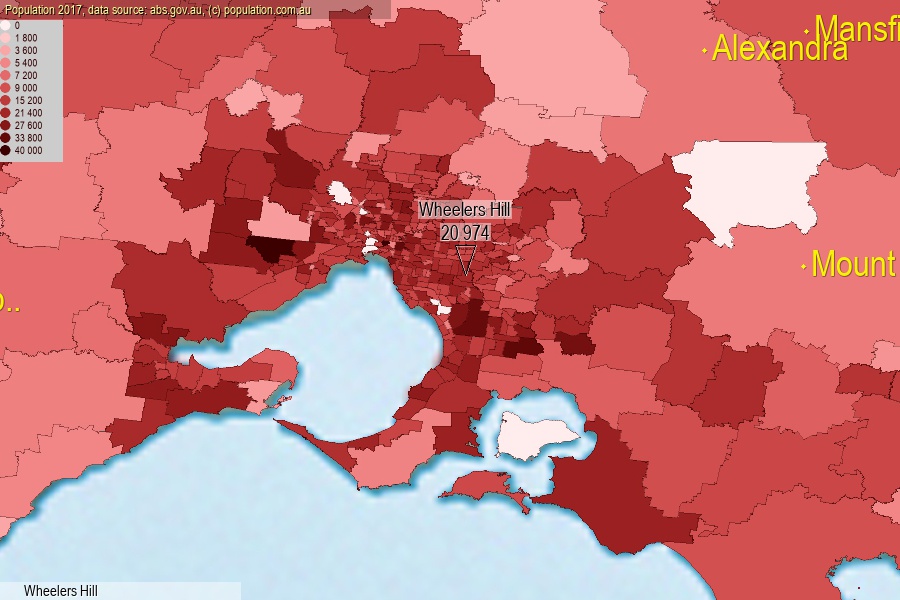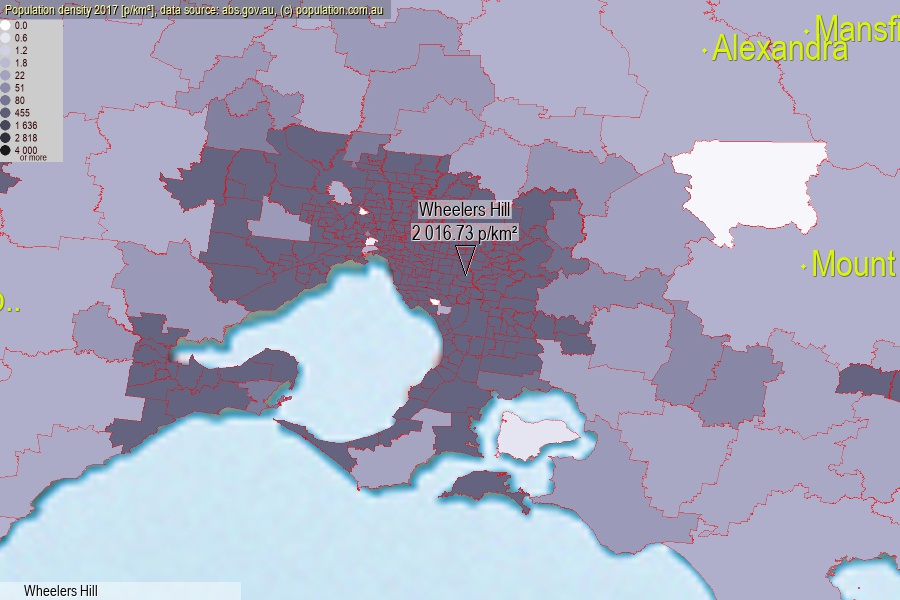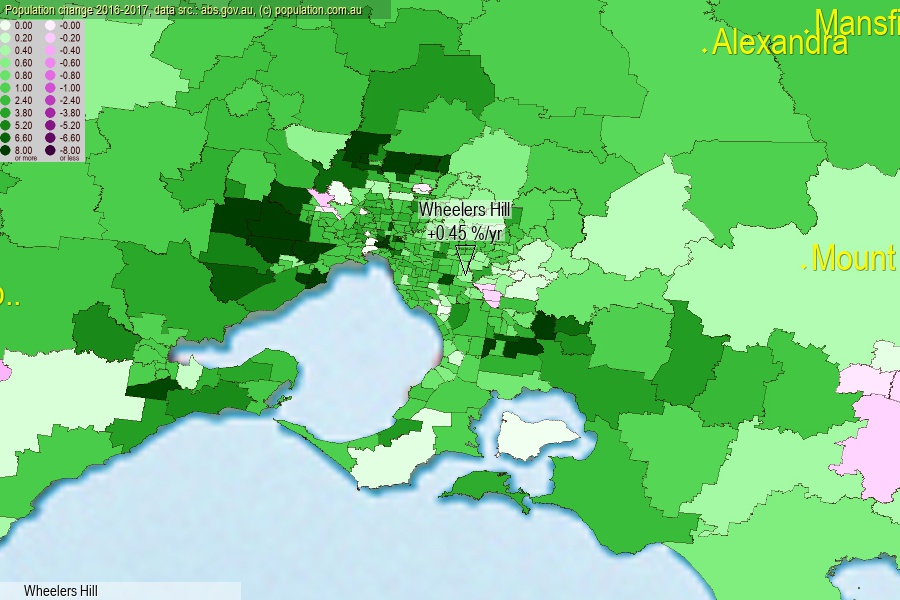 population.com.au
population.com.auLast official estimated population of Wheelers Hill (as Statistical Area Level 2) was 20 974 people (on 2017-06-30)[2]. This was 0.08% of total Australian population and 0.326% of VIC population. Area of Wheelers Hill is 10.40 km², in this year population density was 2 016.73 p/km² . If population growth rate would be same as in period 2016-2017 (+0.45%/yr), Wheelers Hill population in 2025 would be 21 741. [0]



Click to enlarge. Wheelers Hill is located in the center of the images.
Population [people], population density [p./km²] and population change [%/year] [2]
View borders » (new window) [4]
[1991-1992] -1.48 %/Yr.
[1992-1993] -1.81 %/Yr.
[1993-1994] -2.26 %/Yr.
[1994-1995] -1.40 %/Yr.
[1995-1996] -0.18 %/Yr.
[1996-1997] -0.58 %/Yr.
[1997-1998] -0.42 %/Yr.
[1998-1999] -0.72 %/Yr.
[1999-2000] -0.54 %/Yr.
[2000-2001] -0.18 %/Yr.
[2001-2002] -1.48 %/Yr.
[2002-2003] -1.27 %/Yr.
[2003-2004] -0.90 %/Yr.
[2004-2005] -0.54 %/Yr.
[2005-2006] -0.07 %/Yr.
[2006-2007] -0.67 %/Yr.
[2007-2008] -0.28 %/Yr.
[2008-2009] -0.07 %/Yr.
[2009-2010] -0.59 %/Yr.
[2010-2011] -0.84 %/Yr.
[2011-2012] +0.20 %/Yr.
[2012-2013] +0.22 %/Yr.
[2013-2014] +1.19 %/Yr.
[2014-2015] +1.35 %/Yr.
[2015-2016] +0.74 %/Yr.
[2016-2017] +0.45 %/Yr.
[0] Calculated with linear interpolation from officially estimated population
[1] Read more about SA2 and Australian Statistical Geography Standard (ASGS) on abs.gov.au
[2] Population data from Australian Bureau of Statistics (Population and density: 2017; change: 2016-2017)
[3] Digital Boundaries: Australian Statistical Geography Standard (ASGS) 2016.
[4] Border coordinates are simplifyed using Ramer-Douglas-Peucker algorithm.